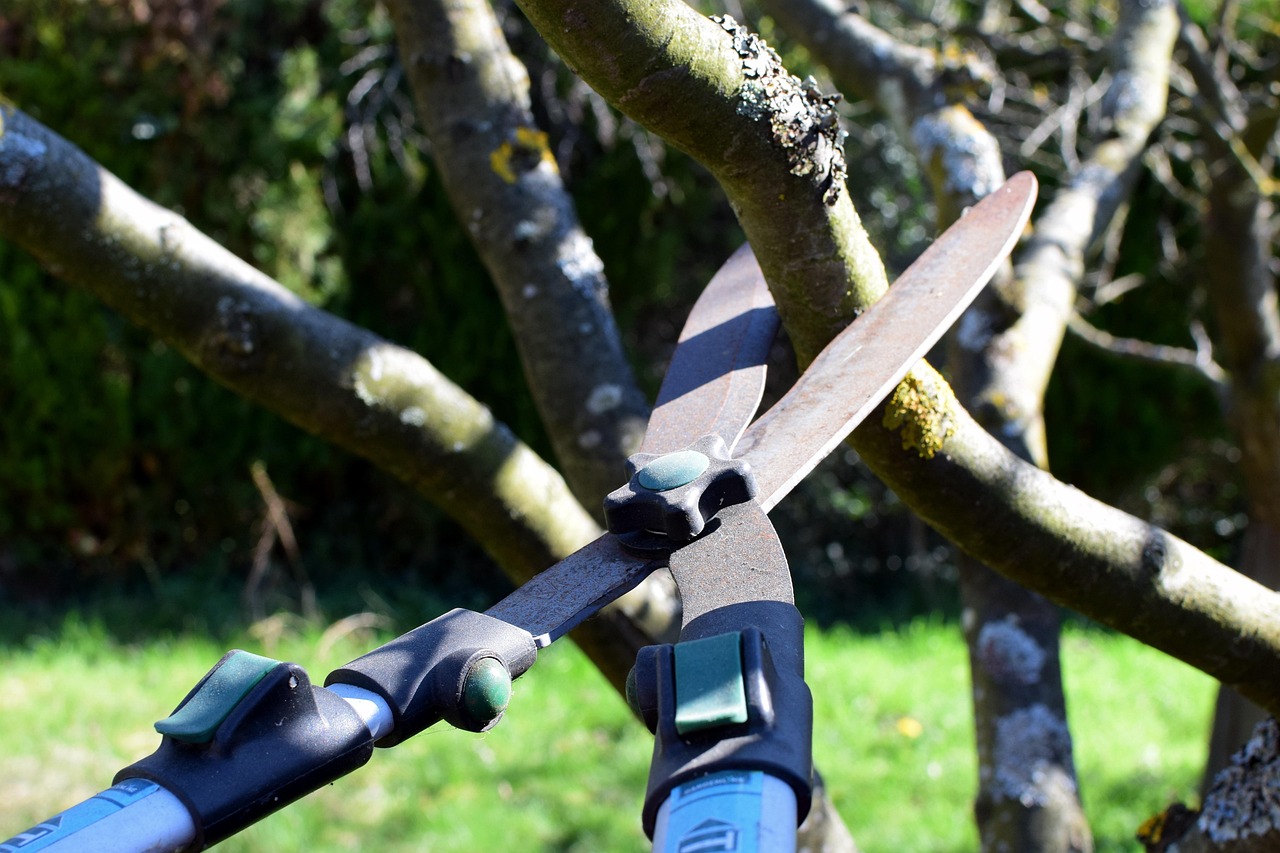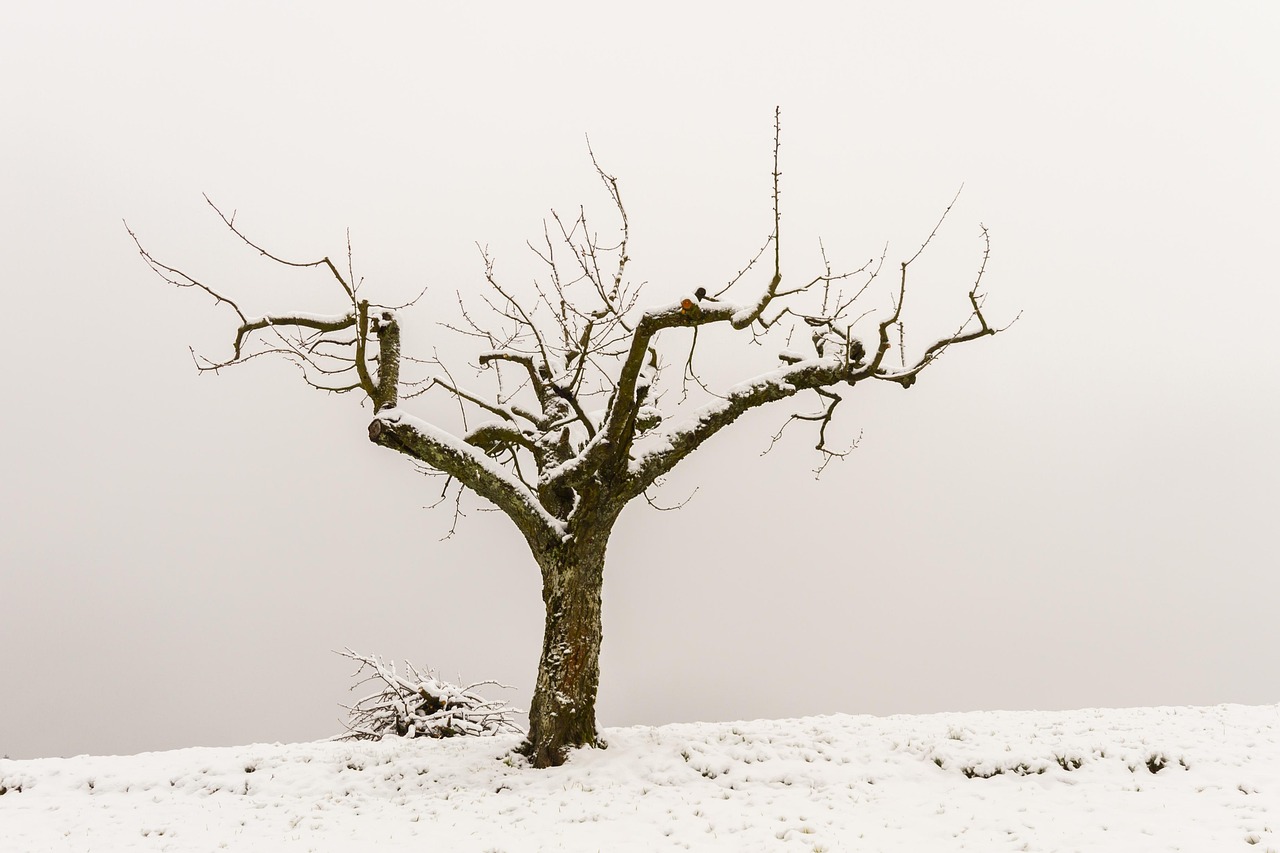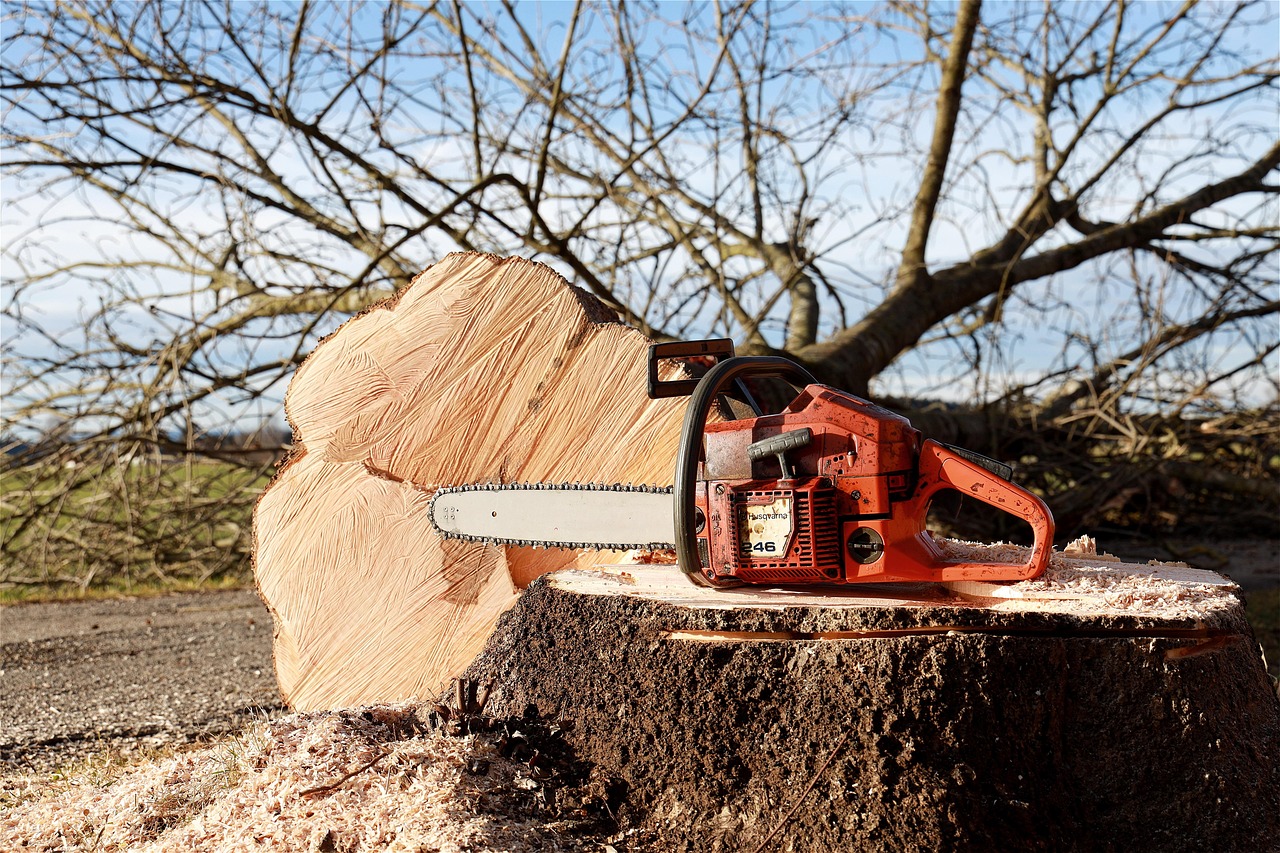The cost of tree pruning services typically ranges from $200 to $1,000, depending on factors such as tree size, location, and the complexity of the job. Most homeowners can expect to pay around $300 to $800 for standard pruning services in their area.
Understanding Tree Pruning Services
Tree pruning is an essential part of maintaining the health and aesthetics of your landscape. Regular pruning promotes growth, improves tree structure, and enhances the overall appearance of your yard. It also helps in preventing hazards caused by overgrown branches, especially during storms or high winds.

Investing in tree pruning services can significantly increase the lifespan of your trees. Properly pruned trees are less susceptible to disease and are more likely to thrive in their environment. However, understanding the costs associated with these services is crucial for homeowners looking to maintain their property effectively.
Factors Influencing Pruning Costs
The cost of tree pruning can vary widely based on several key factors:
- Tree Size: Larger trees generally require more effort and specialized equipment to prune, leading to higher costs.
- Location: Trees that are harder to access, such as those near power lines or in tight spaces, may incur additional charges due to the complexity of the job.
- Type of Tree: Different species have varying growth patterns and pruning needs, which can affect pricing.
- Time of Year: Seasonal demand can influence prices. For instance, spring and summer are popular times for pruning, potentially raising costs.
- Condition of the Tree: If a tree is diseased or damaged, additional care may be needed, increasing overall expenses.
Typical Pricing Models
Tree pruning services often use different pricing structures. Here are the most common types:

| Pricing Model | Description |
|---|---|
| Hourly Rate | Some services charge by the hour, usually ranging from $50 to $150 per hour depending on the service provider’s experience and location. |
| Per Tree Rate | This model charges a flat fee per tree. Prices typically range from $100 to $1,000 based on the tree size and complexity. |
| Flat Fee for Multiple Trees | If you have several trees needing pruning, many companies offer a discount for multiple trees. This could range from $300 to $1,500. |
Average Cost Estimates by Tree Size
To better understand how tree size impacts pricing, consider the following average estimates:
| Tree Size | Average Cost |
|---|---|
| Small (up to 15 feet) | $200 – $400 |
| Medium (15-30 feet) | $300 – $600 |
| Large (30-60 feet) | $600 – $1,000 |
| Extra Large (over 60 feet) | $1,000+ |
Finding Tree Pruning Services in Your Area
When searching for tree pruning services, it is essential to consider local providers. Look for companies with good reviews and verified credentials. Additionally, ask for quotes from multiple providers to ensure you receive a fair price. Many companies offer free estimates, allowing you to compare costs without any commitment.
Moreover, check if the company has insurance and certifications. This protects you from liability in case of accidents or damages during the pruning process. A reputable company will also provide a detailed breakdown of their services and pricing structure.

By understanding the factors that influence tree pruning costs and knowing how to find reliable services, homeowners can make informed decisions that benefit both their trees and their budgets.
Benefits of Regular Tree Pruning
Regular tree pruning offers numerous benefits that extend beyond aesthetic appeal. Keeping your trees healthy and well-maintained can lead to a safer and more enjoyable outdoor environment. Here are some key advantages of incorporating regular pruning into your tree care routine:
- Promotes Health: Pruning removes dead or diseased branches, allowing the tree to focus its energy on healthy growth.
- Improves Safety: Removing weak branches reduces the risk of falling limbs that could cause injury or property damage.
- Encourages Growth: Proper pruning techniques can stimulate new growth and improve overall tree structure.
- Enhances Aesthetics: Well-pruned trees create a more visually appealing landscape, increasing property value.
- Prevents Overcrowding: Thinning out dense branches ensures that sunlight reaches all parts of the tree, promoting healthy foliage.
Types of Pruning Techniques
Different pruning techniques can be employed based on the tree’s needs and the desired outcome. Understanding these techniques can help homeowners make informed decisions when hiring a professional service. Here are some common pruning methods:

- Thinning: This technique removes select branches to reduce density and improve airflow within the tree.
- Reduction: Used to reduce the overall size of the tree, this method is often applied to control height and spread.
- Raising: This involves removing lower branches to provide clearance for pedestrians and vehicles.
- Cleaning: This method focuses on removing dead, diseased, or damaged branches to enhance the tree’s health.
- Structure Pruning: Aimed at developing a strong branch structure, this technique is essential for young trees to promote proper growth.
Seasonal Considerations for Pruning
The timing of tree pruning plays a significant role in its effectiveness. Different seasons have varied impacts on tree growth and health. Here’s a breakdown of when to prune for optimal results:
| Season | Recommended Actions |
|---|---|
| Winter | The best time for most trees, as they are dormant. This minimizes stress and allows for quick healing. |
| Spring | Ideal for light pruning of flowering trees right after they bloom to avoid cutting off buds. |
| Summer | Pruning during summer is useful for removing unwanted growth and managing size but should be done cautiously. |
| Fall | Avoid heavy pruning in fall as it can encourage new growth that may not survive winter. |
The Role of Professional Arborists
While DIY pruning might seem appealing, hiring a professional arborist is often the best choice for significant tree care. Arborists are trained to understand the biology and needs of various tree species. Here are some reasons to consider professional services:
- Expertise: Arborists possess specialized knowledge about tree species and the best pruning techniques.
- Safety: Climbing trees and using power tools can be dangerous. Professionals have the right equipment and training to do the job safely.
- Health Assessments: An arborist can identify potential health issues before they become significant problems.
- Proper Equipment: Professionals use specialized tools that ensure clean cuts and minimize damage to the tree.
- Time-Saving: Hiring an expert saves you time and effort while ensuring high-quality results.
Cost Considerations for DIY vs. Professional Services
If you’re considering pruning your trees yourself, it is important to weigh both the costs and benefits of DIY versus hiring professionals. The following table outlines some key cost considerations:
| Option | Cost Factors |
|---|---|
| DIY Pruning | Costs include purchasing or renting tools, safety gear, and potential injuries or damage to trees. |
| Professional Services | Costs consist of service fees, which typically cover labor, equipment, insurance, and expertise. |
The decision to prune your trees yourself or hire a professional should be based on your comfort level with tools, knowledge of tree care, and the specific needs of your trees. Assessing these factors allows homeowners to make informed choices that best suit their landscaping goals.
In summary, understanding the benefits of regular pruning, the available techniques, and the importance of professional arborists will help homeowners maintain their trees effectively. This knowledge ultimately contributes to healthier trees and a more beautiful landscape.
Common Tree Pruning Myths
As with many areas of gardening and landscaping, tree pruning is often surrounded by myths and misconceptions. Understanding the truth behind these myths can help homeowners make better decisions regarding their tree care practices. Here are some common myths debunked:
- Myth 1: Pruning trees in the fall is always beneficial.
- Myth 2: Topping trees is an acceptable way to manage their height.
- Myth 3: Trees will not heal if cut during the wrong season.
- Myth 4: All tree species require the same pruning techniques.
- Myth 5: It’s okay to prune at any time without considering the tree’s health.
Understanding Tree Anatomy
To effectively prune trees, it is important to understand basic tree anatomy. Knowing how trees grow and develop helps in making informed pruning decisions. Here are key components of tree anatomy relevant to pruning:
| Tree Component | Description |
|---|---|
| Branches | Main limbs that support leaves and flowers. Pruning branches affects the tree’s overall shape and health. |
| Leaves | The primary site for photosynthesis. Maintaining healthy leaves is essential for tree vitality. |
| Bark | The protective outer layer of the tree. Care must be taken not to damage bark when pruning. |
| Cambium Layer | The growth layer just beneath the bark, responsible for new growth. Cuts should be made carefully to avoid harming this layer. |
| Roots | The underground part that anchors the tree and absorbs water and nutrients. Healthy roots support overall tree health, which can be impacted by pruning stress. |
Signs That Your Trees Need Pruning
Recognizing when your trees require pruning is crucial for maintaining their health and appearance. Here are several signs that indicate it’s time to consider pruning:
- Dead or Dying Branches: If you notice branches that are brittle, discolored, or devoid of leaves, they should be removed.
- Overgrowth: If branches are encroaching on structures or power lines, they may need to be trimmed back for safety.
- Pests or Disease: Trees showing signs of infestation or disease should be pruned to remove affected areas and prevent spread.
- Poor Structure: If a tree has an unbalanced shape or weak branch structure, corrective pruning can improve its overall stability.
- Blocked Light: If a tree is blocking sunlight from reaching your garden or lawn, pruning can help ensure adequate light exposure.
The Costs of Emergency Tree Pruning
Emergency tree pruning can be necessary after severe weather events such as storms or heavy snowfall. The costs associated with emergency pruning can differ significantly from regular services due to urgency and circumstances involved. Key factors influencing these costs include:
- Extent of Damage: The more extensive the damage, the higher the cost, as more resources and time will be required.
- Accessibility: If fallen branches or damaged trees are in hard-to-reach locations, additional equipment may be needed, increasing costs.
- Time of Day: Emergency services may incur higher fees if work is required outside regular business hours.
- Specialized Equipment: Some emergencies may require specialized tools or machinery, impacting overall expenses.
Insurance Considerations for Tree Pruning
Homeowners insurance can play a significant role in covering costs related to tree pruning, especially in emergencies. Understanding your policy can help you navigate potential expenses effectively. Here are some key points to consider regarding insurance:
- Coverage Types: Check if your home insurance covers tree removal or damage caused by falling trees, especially if they pose a risk to your property.
- Liability Protection: If a neighbor’s tree falls on your property, liability insurance may cover damages if proven that the neighbor neglected proper maintenance.
- Deductibles: Be aware of deductibles that may apply when filing a claim for tree damage or pruning services.
- Documentation: Keep records of any professional pruning services conducted, as these may be useful when filing a claim.
- Consult Your Agent: Speak with your insurance agent to clarify what is covered under your policy regarding tree-related issues.
A comprehensive understanding of tree care, combined with awareness of common misconceptions and practical considerations, can significantly benefit homeowners seeking to maintain their trees effectively. Recognizing signs of needed pruning, understanding costs related to emergency situations, and considering insurance implications all contribute to responsible tree management practices.
Additional Considerations for Tree Pruning
When planning tree pruning services, there are several additional considerations that homeowners should keep in mind. These factors can significantly affect the overall experience and outcomes of the pruning process.
Local Regulations and Permits
Before proceeding with tree pruning, it is essential to check local regulations regarding tree care. Some municipalities have specific laws about tree maintenance, especially for protected species or trees located in conservation areas. Here are some points to consider:
- Tree Protection Ordinances: Many areas have laws that protect certain tree species from being trimmed or removed without a permit.
- Permit Requirements: If you intend to prune a tree that is considered significant in your area, you may need to obtain a permit.
- Consult Local Authorities: Contact your local forestry department or city planning office to understand the rules that apply to your trees.
Choosing the Right Time for Pruning
The timing of tree pruning can influence the effectiveness of the process. As mentioned previously, winter is generally the best time for most trees. However, additional considerations include:
- Tree Species: Different species may have specific optimal pruning times. Researching your tree type is essential.
- Weather Conditions: Avoid pruning during extreme weather conditions. Wet conditions can lead to disease spread, while severe heat can stress the tree.
- Flowering Cycles: For flowering trees, pruning should typically occur after blooming to avoid removing buds.
Maintaining Your Trees Post-Pruning
After pruning, it is vital to maintain your trees properly to ensure they recover well and thrive. Consider the following practices:
- Watering: Provide adequate water to help the tree recover from pruning stress, especially during dry spells.
- Fertilization: Consider applying a slow-release fertilizer to support new growth and overall health.
- Pest Management: Monitor your trees for signs of pests or disease following pruning, as they may be more vulnerable during this time.
- Regular Inspections: Conduct periodic checks to ensure that new growth is healthy and that any issues are addressed promptly.
Final Thoughts
Understanding the cost of tree pruning services in your area requires a comprehensive approach that considers various factors. By knowing the benefits of regular pruning, recognizing signs of needed maintenance, and understanding the costs involved, homeowners can make informed decisions that enhance their landscape.
The importance of hiring professional arborists cannot be overstated. Their expertise ensures that trees are pruned correctly, promoting health and longevity. Moreover, understanding local regulations and permit requirements helps avoid legal issues that may arise from improper pruning practices.
In summary, regular tree pruning is not just about aesthetics; it plays a crucial role in maintaining the health and safety of your trees and property. It is essential to weigh the costs of DIY versus professional services while considering the potential long-term benefits of investing in quality tree care. By taking these steps and being mindful of their trees’ needs, homeowners can enjoy a beautiful and safe outdoor environment for years to come.
Ultimately, proper tree maintenance through informed pruning practices is an investment in your landscape’s future health and beauty. Whether you choose to hire a professional or take on the task yourself, being educated about tree care will yield the best results for your home and community.
